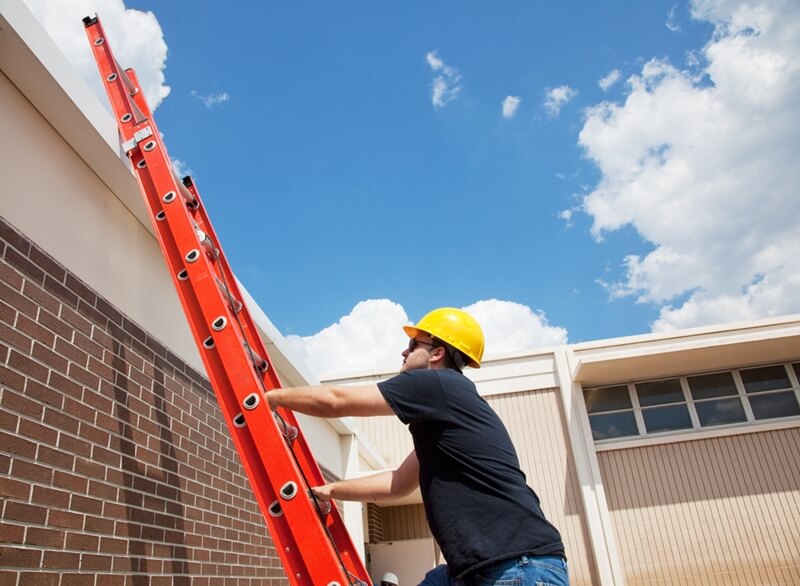How to Choose the Right Kind of Ladder
Get Inspired
Often overlooked as a masterpiece of simple engineering, the humble ladder has been helping us to change light bulbs, paint walls and fix broken roofs for hundreds of years. It's nigh-on impossible to complete any DIY jobs that require you to get up high without a ladder, and there are several kinds for you to choose from, depending on the type of work you're doing.
It can be easy to think that you'll only need one kind of ladder regardless of your task, but that's just not true. In this modern day and age, there are a multitude of ladders for you to choose from, and at Kennards Hire, we've got them all. Read on to find out just how to choose the right ladder for your needs.
A head for heights
Ladders are used to help you get to hard-to-reach areas, but you'll still need to make sure you select one that's suitable. After all, you won't need a seven-metre ladder to paint the ceiling of your living room, and a stepladder won't suffice if you need to fix that dodgy tile up on the roof.
If you looking to hire an extension ladder, you'll need one that's around two to three metres longer than the contact point, which is usually the wall or roof line. Such a ladder will grant you enough length to overlap ladder sections, and an extension above the roof line if need be. The highest safe standing level on such a ladder is four rungs from the top.
Ladders are used to help you get to hard-to-reach areas, but you'll still need to make sure you select one that's suitable.
If a stepladder is what you're after, you shouldn't set foot higher than two rungs from the top, as you'll be at risk of losing your balance and falling. According to the Werner Height Safety Chart, the maximum safe reaching point is just over a metre higher than the ladder itself, which should give you an idea to the height of the ladder you require.
Material world
This is another aspect of choosing a ladder that is often overlooked - what it's actually made of. Though wooden ladders still exist, they are few and far between these days, and it's largely a choice between either aluminium or fibreglass. At Kennards Hire, we have both, but which one do you need?
It's really up to you as to which you pick, and this often comes down to the material that you are most comfortable with. However, certain safety considerations should still come into play when making your decision. Look at it this way - if you're carrying out a little electrical work (which brings its own inherent dangers) you should opt for fibreglass, as this is not a good conductor - unlike aluminium! Remember, you can always ask our expert team who are on-hand to advise you in such matters.
How's it holding up?
Every ladder made in Australia is legally required to display both a Duty Rating and a Load Rating, which are used to let you know what they are designed for. There are only two Duty Ratings - Domestic and Industrial, which are pretty self-explanatory. A domestic ladder will be just fine for use around the home, but should not be used on, say, a building site.
The Load Rating will tell you how much weight the ladder can safely bear. Simply put, the weight of the person using the ladder (including their clothes) as well as anything that they are carrying, tools and all, should be less than the Load Rating, otherwise the ladder is not safe to use.
A domestic ladder should never have a load rate of less than 100 kilograms, with an industrial one having a minimum of 120 kgs.
Be sure to get in touch with our expert team to help you choose the perfect ladder for your needs - we'd be happy to help.

